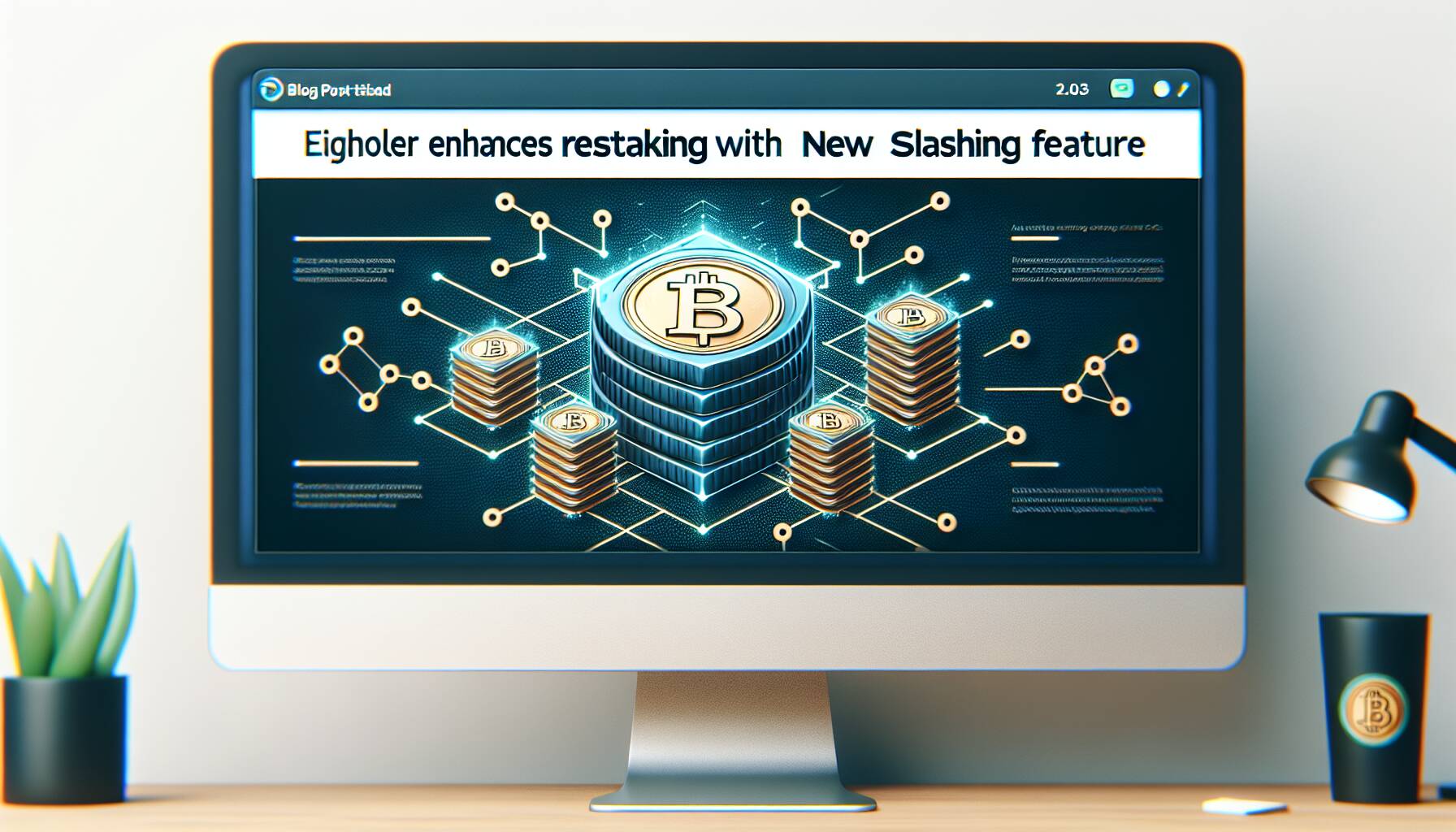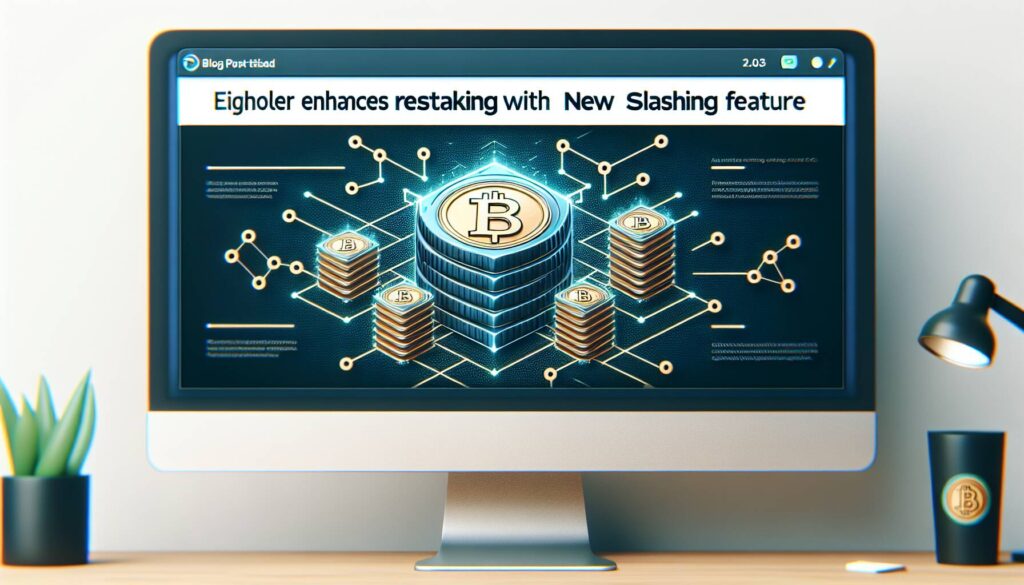In a significant advancement for the cryptocurrency industry, EigenLayer is set to introduce a much-anticipated feature to its restaking network: slashing. Just shy of the one-year anniversary of its initial launch, this addition aims to enhance the security and integrity of the protocol, which enables users to restake their ether (ETH) collateral to earn further rewards. EigenLayer’s founder, Sreeram Kannan, highlighted that this implementation will fulfill the protocol’s original promise of a robust security system.
Launched amid considerable excitement, EigenLayer has quickly risen to prominence, claiming over $7 billion in restaked assets. This makes it one of the largest decentralized finance (DeFi) applications in the Ethereum ecosystem. However, until now, the absence of slashing—a mechanism designed to penalize bad actors by revoking collateral—has drawn criticism and raised questions about the protocol’s reliability.
“We are happy to say now that the whole promise has been delivered,” said Kannan, reflecting on the journey of the EigenLayer protocol.
With the slashing feature set to go live, active validated services (AVSs) will gain the ability to impose slashing conditions, ensuring that operators who act maliciously can face tangible penalties. The existing proof-of-stake models in many systems have operated without slashing, but EigenLayer’s model emphasizes accountability. Kannan notes that while slashing is a critical mechanism, it is not universally incorporated across all protocols.
As EigenLayer’s innovative restaking mechanism allows for a broader pooling of security, the slashing feature has undergone careful redesign to mitigate concerns of introducing unsafe leverage within the Ethereum ecosystem. The new system ensures that operators can maintain an awareness of their specific stakes, thereby limiting their exposure to any poorly managed AVS. “You have unique attributability of stake to a particular AVS,” Kannan explained, underscoring the precision and safety goals of the update.
As EigenLayer sets the stage for its slashing launch on April 17, the rollout provides an important benchmark not just for its own protocol, but also for the broader DeFi landscape, as it continues to innovate in the pursuit of a secure and resilient cryptocurrency environment.

EigenLayer Launches Slashing Feature: A New Era for Restaking
EigenLayer, an innovative Ethereum protocol, is enhancing its restaking network with a critical feature called “slashing” to promote security and accountability among users. Here are the key points to consider:
- Introduction of Slashing:
- Slashing revokes collateral from “restakers” who act maliciously.
- It aims to fulfill EigenLayer’s original promise of accountability and security.
- Importance of Slashing in DeFi:
- Reinforces security in decentralized finance (DeFi) applications.
- Slashing becomes a core mechanism for penalizing bad actors among actively validated services (AVSs).
- Growth of Restaked Assets:
- EigenLayer manages over $7 billion in restaked assets, establishing itself as a major player in the DeFi ecosystem.
- The protocol supports 39 validated services, enhancing its usability and security model.
- User Responsibility and Operator’s Role:
- Operators delegate restaked assets to services, generating rewards based on their level of participation.
- Slashing conditions will be set by AVS teams to penalize non-compliance or malicious behavior.
- Combatting Leverage Risks:
- A redesigned slashing system mitigates risks posed by potentially unsafe leverage within the Ethereum ecosystem.
- Operators can limit exposure to specific AVSs, preventing localized issues from cascading into widespread vulnerabilities.
- Testing and Launch Timeline:
- Slashing has been rigorously tested since December on Ethereum’s developer networks.
- Going live on April 17, teams must opt-in, suggesting a gradual implementation across applications.
“Slashing is the core accountability mechanism; not every proof-of-stake system has implemented it yet.” – Sreeram Kannan, EigenLayer Founder
EigenLayer’s Slashing Feature: A Game Changer or a Cause for Concern?
The recent launch of EigenLayer’s slashing mechanism marks a pivotal moment in the Ethereum ecosystem, effectively addressing a significant gap in its “restaking” model. While EigenLayer has attracted considerable attention, boasting over $7 billion in restaked assets, this newfound feature could be a double-edged sword, offering both competitive advantages and potential pitfalls compared to other protocols in the decentralized finance (DeFi) space.
Competitive Advantages: The introduction of slashing aligns EigenLayer with recognized safety measures in the proof-of-stake ecosystem, a feature notably absent from many other networks, including Solana. By penalizing malicious behavior among operators, EigenLayer is poised to enhance the overall security and accountability of its shared security model. This could make the platform more attractive to institutional investors who prioritize reliability and trustworthiness in their DeFi ventures. Other protocols might not offer this level of accountability, which can be a significant differentiator for EigenLayer as it seeks to establish itself as a leader in the sector.
Additionally, the unique design allowing operators to limit their exposure to specific actively validated services (AVSs) helps mitigate risks associated with bad actors. This “unique attributability of stake” provides a safeguard, ensuring that a failure in one AVS doesn’t necessarily compromise others. This modular approach could be particularly appealing for stakeholders looking for a secure and innovative staking method, potentially drawing users from competing platforms.
Potential Disadvantages: However, the slashing system is not without its challenges. The criticism EigenLayer faced regarding the absence of slashing highlights the high expectations set by the protocol’s original pitch. If the rollout does not meet user expectations or if early incidents lead to widespread slashing, it risks diminishing confidence in the platform. Investors accustomed to other proof-of-stake infrastructures may also be hesitant to adapt to EigenLayer’s model of simultaneous staking and restaking, fearing complications if they are unfamiliar with how slashing operates.
Who Could Benefit or Face Problems? For decentralized developers and validators, the new slashing feature can be a boon, offering a structured way to ensure accountability among network participants and improving overall network resilience. Those developing AVSs that are well-constructed may thrive in an environment that promotes diligence and high standards. On the flip side, operators who lack robust practices or are operating on shaky ground may find themselves at risk if their actions lead to slashing penalties, potentially jeopardizing their financial standing and reputations. Furthermore, this new system poses a challenge to less secure protocols that operate without such stringent accountability measures, as EigenLayer may now attract users looking for a safer staking environment.
As EigenLayer rolls out this pivotal slashing feature, the stakes could not be higher; the trajectory of this emerging protocol will be watched closely by both supporters and skeptics in the ever-evolving DeFi landscape.

















